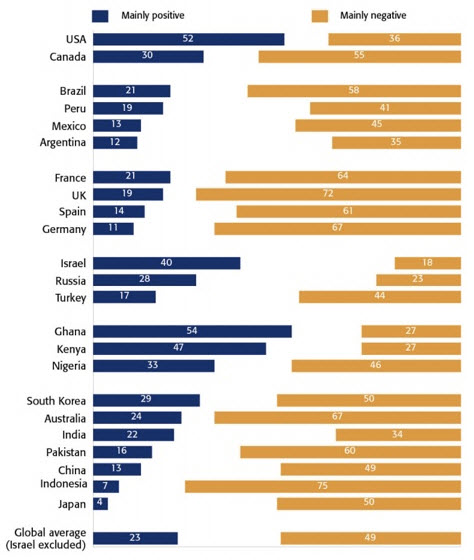A Growing Rift Between Senate and Executive
Leon Panetta, the CIA director at the time, agreed to make the millions of documents available to the Senate committee staffers — 6.2 million by this account — possibly a deliberate overload in the hope that the Senate would despair and go away. But they persevered and plowed through a document release that spanned five years ending in September 2006, when the CIA prisoners were transferred to Guantánamo. In a basement room at a CIA facility the agency set up a separate network into which thousands of documents were downloaded daily for Senate staffers to pore through to ferret out what had actually happened in the agency’s detention and interrogation program. The resulting 6,300-page report was completed by the Senate committee at the end of 2012 when it was submitted to the CIA for its official response. Today’s CIA director, John Brennan, who was a senior CIA official at the beginning of the Bush administration when the interrogations were first begun, has found himself in an awkward position. During his confirmation hearing last year, he said that he had always been opposed to the “enhanced interrogation” techniques employed by the CIA and had voiced his opposition to other agency officials. “He did not say to whom he had expressed these misgivings, and former CIA officials at the time said they could not recall Mr. Brennan’s having opposed the program.” Brennan came on board in early 2013 and produced a 122-page rebuttal, strongly objecting not so much to the report’s facts as its incendiary conclusions. The report said that the CIA’s use of torture was more brutal and extensive than had ever been revealed and that it had yielded little of value, contrary to what had all along been reported to the White House, Congress and the public in justification of America’s adoption of torture. the leak
In mid-December of last year in an open hearing, intelligence committee member Sen. Mark Udall of Colorado referred to a CIA document he had seen that tipped off the folks at Langley that Senate staffers had somehow come upon the CIA’s own internal review of its detention and interrogation practices. That set a group of CIA staffers hacking into the network they had set up for the Senate readers, combing through computer logs to see if they could discover whether the internal review was indeed what the outsiders had come upon. That meant the CIA was investigating its congressional overseers, instead of the other way round, which raised questions of law. It prompted agency chief John Brennan to confess the snooping at a meeting he requested in January with Democrat Dianne Feinstein, the chair of the Senate Intelligence Committee, and its ranking Republican member, Georgia’s Saxby Chambliss. The CIA’s review, which summarized thousands of documents, had been ordered up in 2009 by Panetta, evidently to learn what the Senate crew was likely to find out and prevent surprises. What was so problematic was that it had come to the same conclusions as the Senate’s report about more widespread torture and its low value yield. Udall had said the CIA review “is consistent with the intelligence committee’s report” and “conflicts with the official CIA response to the committee’s report”. That is, it contradicted Brennan’s rebuttal. And why had it not been given to the committee’s researchers? dispute erupts
First, the CIA had hacked into the supposedly private network it had set up for the Senate crew. Then this February, Sen. Feinstein learned that the CIA’s acting general counsel, Robert Eatinger, had lodged a criminal complaint with the Justice Department accusing the Senate’s document reviewers of accessing unauthorized material. It can be said that Ms Feinstein went ballistic at that point, and when the media began reporting the accusation, she took to the Senate floor in March to give a blistering 45-minute tongue-lashing to the CIA for what she considered their violation of the separation of powers and the Fourth Amendment’s strictures against search and seizure. And she accused the agency of removing documents from the investigators’ computers, the most conspicuous being what had come to be called the “Panetta Review” itself. Brennan lashed back. He stridently denied his agency had hacked into the Senate-dedicated computers. “Nothing could be further from the truth”, he said. “I mean, we wouldn’t do that. I mean, that’s just beyond the scope of reason.” But at the end of July, a report by the CIA’s inspector general confirmed that, using a false identity, three information technology officers and two lawyers had indeed broken into the Senate computers. Brennan issued an apology to Feinstein and Chambliss. There were calls for him to resign for either lying or an inability to control his agency, but the President stands by him. As for the accusation that the Senate analysts hacked into a CIA computer system apart from the one set up for them to swipe the Panetta Review, the contention that they had the skills to do so is ludicrous. Panetta’s review didn’t begin until three years after the 2006 cutoff of the document stream available to the Senate investigators. What’s obvious is that a whistleblower at CIA slipped the damning report into their segregated download in the hopes that it would be discovered. The CIA is an organization that has already admitted destroying the videotapes of interrogation sessions that utilized torture. This destruction of evidence was approved by none other than Robert Eatinger, the CIA lawyer with the chutzpah to file the fatuous complaint with the Justice Department, and who is in so deep as to be mentioned 1,600 times in the Senate report. In keeping with what we are reporting here — Obama covering up for the CIA — the President exonerated those who destroyed the tapes. taking sides
We are on Feinstein’s side on this one, but it needs to be said that as ostensible overseer of the intelligence community, she has instead been its staunch defender (excessively so, as we have said). She has fully supported the NSA and government spying, and refers to the rest of us as “the privacy people”, so there is a tinge of schadenfreude to see her outraged that her committee has been made to taste its own medicine. 

When President Obama said that, rather than launch a broad inquiry into Bush administration programs like the treatment of terrorism suspects, he believed it best to “look forward as opposed to looking backwards”, that didn’t cut it with the Senate Intelligence Committee. Shortly after Obama’s inauguration they voted 14-1 to embark on an investigation of their own into the prior administration’s and the CIA’s policy of rendition, detention and interrogation — more bluntly stated as torture inflicted on terror suspects sent to secret “black site” prisons in Thailand, Romania, Poland, Lithuania and elsewhere during the Bush years where these practices would theoretically be beyond U.S. law.








